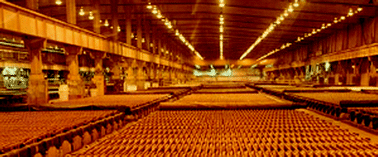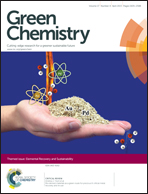Industrial applications of molecular recognition technology to separations of platinum group metals and selective removal of metal impurities from process streams
Abstract
Green chemistry procedures using a novel process based on molecular recognition principles are described for the selective separation and recovery of metals in industrial processes. This process, termed molecular recognition technology (MRT), has the capability to make selective separations at various stages in metal life cycles. Results are given for individual platinum group metal separations, recycling of palladium from end-of-life products, copper purification by control of impurity bismuth concentration levels, and purification of H2SO4 for use in health-related applications by Hg removal to 0.1 mg L−1 concentration levels. In each case, the metals are selectively separated in pure form and can be recovered for reuse or environmentally safe disposal. High metal selectivity is obtained using a pre-designed ligand bonded chemically by a tether to a solid support, such as silica gel. Separations are performed in column mode using feed solutions containing the target metal in a matrix of acid and/or other metals. The target metal is selectively separated by the silica gel-bound ligand, leaving other solution components to go to the raffinate, where individual components can be recovered, if desired. Minimal waste is generated. Elution of the washed column with a small volume of eluent produces a concentrated eluate of pure target metal, which is easily separated in pure form. The MRT process uses innocuous wash and elution chemicals and no solvents. Metal recovery rather than dispersal into the commons is essential from a metal sustainability standpoint. A major benefit of metal recycling is reduction in the amount of virgin ore that must be mined to replace discarded metals. As metal use increases, conservation of this valuable metal resource increases in importance. Metal recycling rates are generally low. From end-of-life high-tech electronic products, they are in the 1–5% range. Separation and recovery results presented here show that green chemistry MRT processes have great promise in increasing metal sustainability in industrial processes.

- This article is part of the themed collection: Elemental Recovery and Sustainability

 Please wait while we load your content...
Please wait while we load your content...